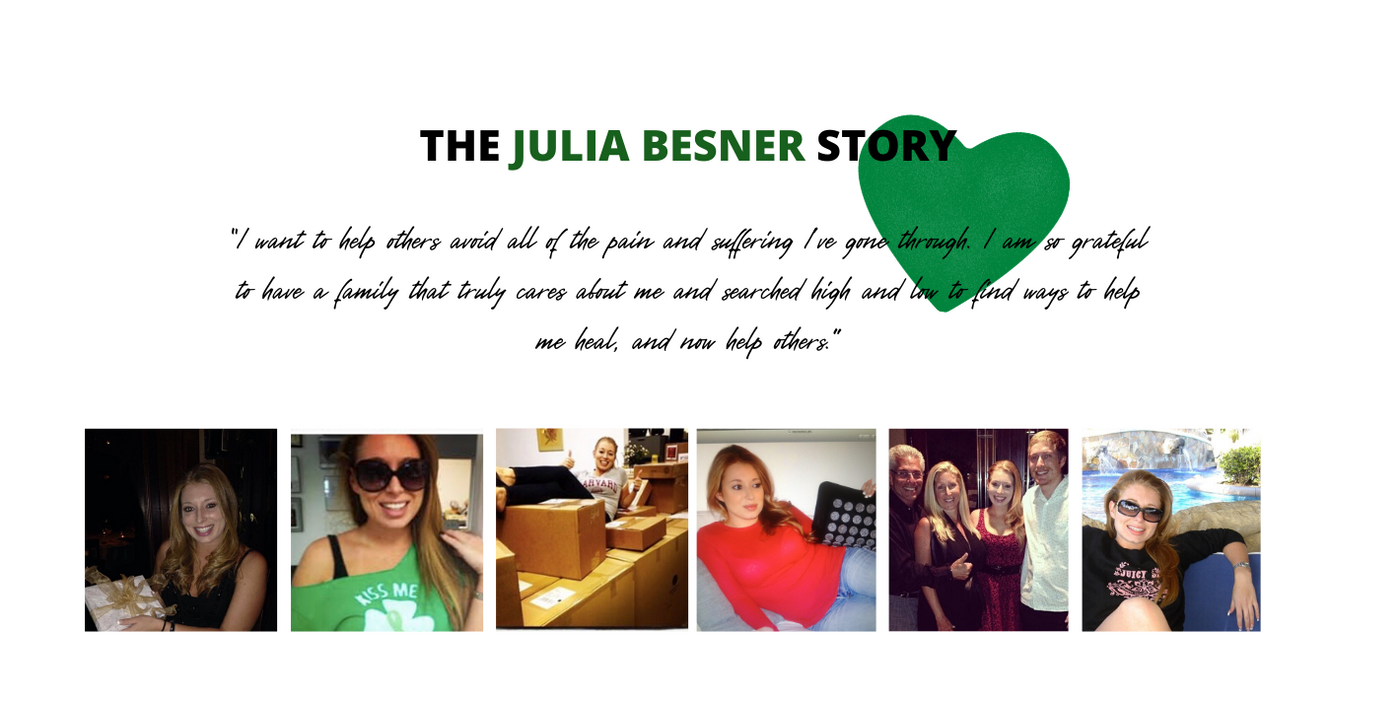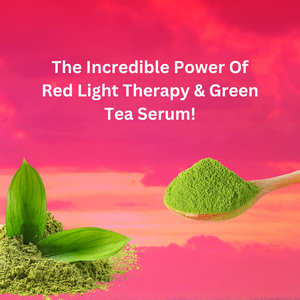Therasage Blog — therasage

Stack Your Hacks™: When Habits Unite, Healing Multiplies
For over 25 years, Therasage has been the #1 trusted name in red light and infrared technology worldwide. Along that journey, we’ve discovered a powerful truth: wellness is never just one thing. True transformation happens when your habits and healing tools come together.
- Robby Besner
- Tags: anti-aging anti-inflammatory autoimmune awareness blood circulation body change charge defining detox detoxification ELF EMF energy exercise Happiness health healthy food heart heart health hydrate immune system inflammation infrared infrared healing infrared heating infrared sauna ions love lyme lyme disease mind mindfulness minutes parsnips pemf PEMF and NAD+ skin health temperature therasage toxins wellness

Supercharge the Benefits of Red Light Therapy with Green Tea Serum
Red light therapy (RLT) is a type of treatment that uses red and near-infrared light to improve the overall health of the skin, but also penetrate below it. This therapy is often used to treat conditions like wrinkles, acne, scars, and dark spots. It can also be used to improve the overall appearance of the skin, but the right red light therapy can also provide whole-body healing benefits as well. Red light therapy is becoming increasingly popular as more people are looking for alternative treatments for both their skin problems and chronic illnesses… or even just for optimizing wellness and vitality!

Skin-related Benefits:
Red light therapy uses LED lights to penetrate the skin at a wavelength of 630-870 nanometers. This penetration boosts collagen production by stimulating the mitochondria—the powerhouses of our cells. In turn, this increase in collagen leads to firmer, smoother skin with fewer wrinkles and fine lines.
Super-boost Red Light Therapy with Green Tea Serum
Maybe you’ve tried red light therapy before and want to find a way to supercharge your skin.
You can use green tea serum on your skin before a session, which is packed with antioxidants and other nutrients that can be beneficial for your skin and body. Read on to learn more about how green tea serum can help improve your complexion and overall health when used in combination with red light therapy!
Green Tea Phyto-Serum contains Vitamin E, which protects the skin; Hyaluronic Acid, a power hydration support; EGCG polyphenols, which rejuvenate the regenerative effects of infrared therapy; and green tea extract, designed to calm and soothe the skin.

Reduces Inflammation
One of the main benefits of green tea is that it can help reduce inflammation. That's thanks to the presence of epigallocatechin gallate (EGCG), an antioxidant that has been shown to reduce inflammation at the cellular level. This makes green tea serum an ideal choice for people with conditions like rosacea or acne, as well as for people who want to minimize the appearance of redness and inflammation.(1)
Fights Free Radicals
Free radicals are unstable molecules that can damage cells and lead to premature aging. Green tea contains powerful antioxidants that can neutralize free radicals, helping to protect your skin against environmental damage. Free radicals are unstable molecules that can cause cell damage, which leads to wrinkles and other signs of aging. This makes green tea serum an excellent choice for people who are looking for anti-aging benefits.(2) By using a product with green tea serum, you can help fight free radical damage and keep your skin looking younger for longer.
Improves Skin Texture
Green tea serum can also help improve the overall texture of your skin. (3) That's because green tea helps promote cell turnover, which allows new, healthy cells to rise to the surface while getting rid of old, damaged cells. This can help improve the appearance of rough, dull skin, giving you a more radiant complexion.
Green tea serum is also effective at fighting inflammation, which is often the cause of acne breakouts. If you suffer from acne, using a green tea serum can help reduce inflammation and prevent future breakouts.(4) In addition, green tea serum can help to soothe sunburned skin and reduce redness and irritation.
What Green Tea Serum Is The Best?
You want to be sure your green tea serum doesn’t contain harmful ingredients—or ones that clash with red light therapy, which can cause the opposite of the desired effect. Our top choice is the ALEX-ISLA Activaté: a luxurious, light-activated serum that fuses cutting-edge skincare science with green tea, nature’s most powerful antioxidant.
Infused with photosensitive green tea compounds, Activaté hydrates, calms redness, and relieves sensitivity while helping to neutralize free radicals and soothe inflammation. With continued use, it strengthens the skin barrier, refines texture, and visibly brightens uneven tone, revealing a smooth, radiant and balanced complexion that only gets better with light.
Thanks to its powerful antioxidant content, green tea helps defend against environmental damage while supporting calm, balanced, and resilient skin. It’s especially beneficial for those prone to sensitivity or breakouts, helping to keep the complexion clear and healthy over time. Incorporate a green tea serum like Activaté into your red light therapy routine and experience the glow that deep nourishment and light can deliver.

The Therasage Tri-Lite panel has helped those battling chronic illnesses achieve optimal health outcomes for patients, clients, and those taking their chronic illnesses into their own hands. This Tri-Lite Panel generates high-powered Red Light and Near-Infrared Frequencies in a soft, lightweight, flexible panel. The exclusive Light Emitting Diode generates the healing light frequencies in the red light spectrum from 600-680 nm, and the near-infrared spectrum from 800 to 880nm, and 900 to 980nm, all from each diode, which means they are super powerful!
If you want the best bang for your buck, green tea serum + red light is what you want to maximize your results!

But wait, there are even more skin-related benefits to Red Light Therapy:
1. Reduces wrinkles and fine lines: We've all heard of using lasers to reduce the appearance of fine lines and wrinkles, but a growing body of evidence suggests that red light therapy can be an effective way to reduce the appearance of fine lines and wrinkles, with few side effects.
Red light therapy is a type of phototherapy that uses low-level wavelengths of red or near-infrared light to stimulate skin cells and promote healing. Studies have shown that red light therapy can increase collagen production, improve blood circulation, and reduce inflammation. All of these effects can help to reduce the appearance of fine lines and wrinkles.(5)
One study looked at the effects of RLT on 136 volunteers who had significant sun damage. The women were divided into two groups, with one group receiving eight weeks of twice-weekly treatments with a red light device, and the other group receiving no treatment. At the end of the study, the researchers found that the treated group had significantly less wrinkles than the untreated group, with less skin roughness.(6)
LED (Light-Emitting Diode) therapy also has proved 91% of subjects to have improved skin tone in a 12-week follow-up, according to a study in The Journal of Cosmetic Dermatology.(7)
2. Stimulates collagen production: Collagen is a protein found in the connective tissue of our bodies, including skin, joints, bones, and tendons. It's what gives our skin its elasticity and strength. Unfortunately, as we age, our bodies produce less and less collagen. This loss of collagen leads to wrinkles, sagging skin, and a loss of firmness.(8)
The light in red light therapy stimulates collagen production and helps to speed up cell turnover. Red light therapy works by penetrating deep into the skin to stimulate collagen production. This process is known as "photobiomodulation," which can modulate inflammatory cells.(9)
When our bodies are exposed to certain wavelengths of light, it causes a chain reaction that leads to increased collagen production. But not all wavelengths of light are equal when it comes to photobiomodulation. Studies have shown that red and near-infrared light are the most effective for stimulating collagen production.(10)
One study found LED treatments would increase collagen 31% more in treated vs. non-LED treated individuals, as evaluated on a tissue-engineered Human Reconstructed Skin model.(11)
Other studies have shown similar results. A study published in 2014 found that red light therapy can increase intradermal collagen density and reduce fine lines and wrinkles.(12)
One of the best things about RLT is that it's completely safe and has no negative side effects. Unlike some other skin care treatments, there's no risk of sun damage with red light therapy. You can use it as often as you like without fear of damaging your skin. Many people find that their skin looks and feels healthier after just a few sessions of red light therapy!
3. Fades scars and dark spots and reduces hyperpigmentation: Red light therapy can also help to fade dark spots caused by sun damage or melasma.
Red light therapy works by increasing blood flow to the treated area, which delivers more oxygen and nutrients to the cells. This in turn helps to reduce inflammation and promote cell turnover, imporving the appearance of your skin.
One of the most common uses for red light therapy is to fade scars. Whether you have surgical scars, acne scars, or any other type of scar, red light therapy can help to reduce their appearance. Red light therapy works by stimulating collagen production and improving circulation in the area, which helps to fade the scar tissue.(13)
One of the benefits of RLT is that it can help reduce hyperpigmentation, which is a common skin issue. Hyperpigmentation is the darkening of an area of skin due to an overproduction of melanin. It can be caused by sun damage, hormonal changes, or certain medical conditions. Red light therapy can help to minimize the appearance of hyperpigmentation.(14)

4. Treats psoriasis, eczema, and rosacea:
Not only does red light therapy stimulate collagen production, but it also helps to reduce inflammation and speed up healing. This is why red light therapy is often used to treat conditions like acne, psoriasis, and eczema.
The anti-inflammatory properties of red LED light can help to soothe irritated skin and reduce redness and swelling. By improving circulation and boosting collagen production, red LED light can help even out your skin tone and give you a more youthful appearance.
One study from Dermatological Surgery showed that RLT alone can be effective for treating acne vulgaris, which is caused by a blockage of sebaceous glands in hair follicles.(15)
Numerous studies have shown that red light therapy can be effective in treating inflammatory skin conditions like eczema and psoriasis.(16) In one study, 30 patients with psoriasis were treated with red light therapy three times per week for eight weeks. At the end of the study, 80% of the patients had experienced significant improvements in their symptoms.
Another study looked at the effect of phototherapy on patients with atopic dermatitis, which is a type of eczema. It showed clinical score improvements and also fewer chances of remission with this type of therapy for AD.(17) Another study results showed that red light therapy significantly improved the symptoms of atopic dermatitis lesions in the majority of mice in combination with treatment for supporting the immune system.(18)
Body-related Benefits
1. Pain Relief: If you suffer from chronic pain, red light therapy can be a great way to find relief. The infrared light penetrates deep into the tissue and helps to reduce inflammation. If you're struggling with pain, you're not alone. According to the National Institutes of Health, 25.3 million adults experience chronic pain, and 40 million experience severe pain.(19)
There are many different types of pain, and it can be caused by a wide variety of factors. But regardless of the cause, if you're living with pain, you want relief—and you want it fast. That's where red light therapy comes in.
Red light therapy uses red or near-infrared light to treat a wide range of conditions, from sore muscles to chronic pain. It's believed to work by promoting healing and reducing inflammation. And recent studies have shown that it can be an effective treatment for pain.
Red light therapy is thought to work by stimulating the production of adenosine triphosphate (ATP). ATP is the body's main source of energy, and it plays a key role in cell function. Red light therapy is non-invasive and does not require any downtime. The device emits red or near-infrared light, which is then absorbed by the cells in the body. The light energy stimulates mitochondria—the powerhouses of cells—to produce ATP. This increased ATP production leads to reduced inflammation and enhanced cell function. By stimulating ATP production, red light therapy can help reduce inflammation and promote healing.(20)
A number of studies have shown that red light therapy can be an effective treatment for pain relief. One study published in Photomedicine and Laser Surgery found that red light therapy was effective in reducing chronic neck pain.(21) Another study published in Lasers in Medical Science found that red light therapy was effective in reducing shoulder pain associated with rotator cuff tendinitis—a common condition that causes inflammation and pain in the shoulder joint.(22)
Red light therapy uses different wavelengths of light to penetrate the skin and underlying tissue. When the light is absorbed, it triggers a biological response that reduces inflammation and speeds up the healing process. This helps to relieve pain and improve function.

2. Sleep Quality: Do you have trouble falling asleep? Or staying asleep? You're not alone. Millions of Americans suffer from some form of insomnia, and it can take a toll on your health, work, and personal life. But there's hope! Red light therapy has been shown to be an effective treatment for insomnia and sleep disorders. Infrared light helps to regulate the circadian rhythm and can improve overall sleep quality.
Red light therapy stimulates the production of melatonin, which is a hormone that helps regulate sleep. Melatonin is produced in the pineal gland, which is located in the brain. When our eyes are exposed to red light, it signals to the brain that it's time to start producing melatonin.(23)
A study published in the journal Sleep Medical Review found that people who used red light therapy benefited if they had general sleep issues or circadian rhythm disorders.(24)
Often, RLT can improve sleep quality in people with insomnia and other sleep disorders. Many fall asleep more easily and sleep more soundly than those who did not receive red light therapy.
Red light therapy is a safe and effective treatment for insomnia and other sleep disorders. If you're looking for a natural way to improve your sleep, red light therapy may be worth considering.

3. Brain Function and Mood: Infrared light has been shown to improve brain function and protect against neurodegenerative diseases.
Red light therapy has been shown to improve mood and increase levels of serotonin. Seasonal Affective Disorder, also known as SAD, is a type of depression that comes and goes with the seasons. People who suffer from SAD often experience low energy, difficulty concentrating, and changes in appetite or weight.(25)
Red light therapy is one treatment option for SAD that has gained popularity in recent years. But how does it work? Studies suggest that red light therapy can improve brain function and mood by increasing levels of serotonin, the “happy hormone.”(26) Let’s take a closer look at how red light therapy helps the brain and mood.
Serotonin is a neurotransmitter that plays a role in mood, appetite, and sleep. Low levels of serotonin are linked to depression, anxiety, and other mental health disorders.
Another study found that red light therapy improved symptoms of depression with use just one hour a day.(27)
In addition to improving mood, red light therapy has also been shown to improve brain function. Multiple studies found that red light therapy improved cognitive performance in people with dementia and Alzheimer’s.(28) Another study found that light therapy in general improved symptoms of ADHD in children.(29)
Red light therapy is also being studied as a potential treatment for concussion and Traumatic Brain Injury. A concussion is a type of brain injury that can cause symptoms like headache, nausea, and dizziness.(30)
4. Immunity: Red light therapy can help to boost the immune system and fight off infection. There is evidence that red light therapy can help improve immunity.
One study found that red light therapy was able to increase the activity of certain immune cells, which are important for fighting off infection.(31) Additionally, another study found that red light therapy was able to improve the function of immune cells in people with acute respiratory distress syndrome and even post-COVID lung support.(32) Though more research is needed, these studies suggest that red light therapy could potentially be a helpful treatment for boosting immunity.
But how does it help immunity? Because, as mentioned, red light therapy can increase levels of ATP (adenosine triphosphate), which is the energy molecule that our cells use for everything from metabolism to division. ATP is essential for cell function and a healthy immune system.
ATP isn't the only molecule that's important for immunity; another is nitric oxide (NO). Nitric oxide is a signaling molecule that helps regulate immune responses. It's also a powerful antioxidant that helps protect cells from damage.(33)
Studies have shown that red light therapy can increase levels of nitric oxide. That's a significant increase that can help boost immunity and protect cells from damage.
We hope you learned something and enjoyed this article, if you're interested in experiencing the benefits shared in this article, click here to check out the Tri-Lite!
In Health,
Therasage
For references, click here to see our science page.

Follow Your Bliss....
How do you find time for yourself, determine and sort through your priorities, interpret the messages, rise above the personal chaos, and feel the simple joys that life has to offer? Stay with me and I will share my life's experience and share how to find happiness within the matrix of today’s complex world.- Melody Besner
- Tags: Bliss Follow Your Bliss Happiness Love Therasage

The Julia Besner Lyme Disease Story
May is Lyme Disease Awareness Month; a meaningful month for many people as they work hard to spread awareness, take time to educate others, and use this opportunity to share their own personal stories on how Lyme disease has affected themselves and their families.- Melody Besner
- Tags: awareness Julia Besner lyme disease therasage

More Than Vitamin D: 6 Benefits of Sun Exposure You Might Not Know About
News flash: What you’ve been taught about sun exposure is probably wrong, science says. For several decades, you’ve likely been encouraged to avoid the sun or slather yourself with sunscreen from head to toe to prevent sunburns, skin cancer, and premature aging (think sunspots and wrinkles). But emerging research suggests that by steering clear of the sun altogether, you’re actually missing out on the crucial health benefits of sunlight and sun exposure.









